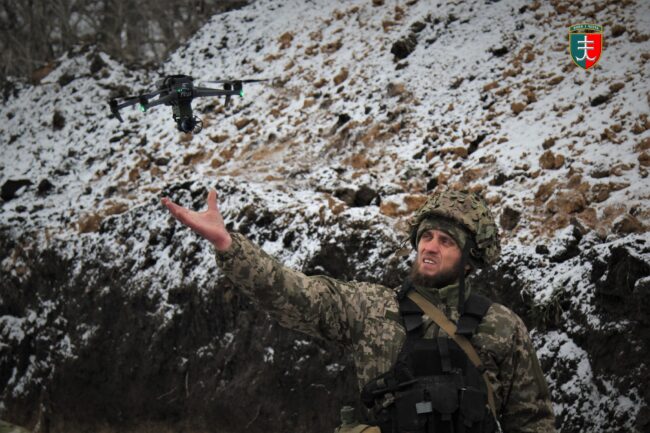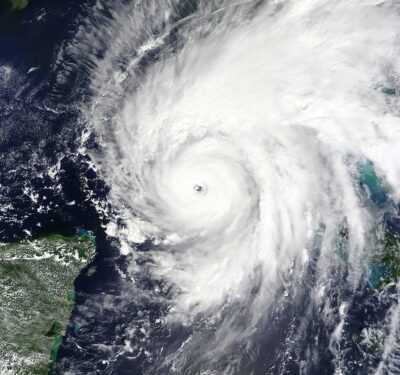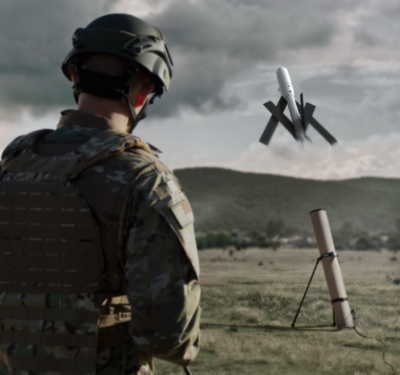
In the last four years, Ukrainian minister Mykhailo Fedorov’s portfolio has snowballed. Five years after entering politics, in 2019 he assumed the newly created office of Minister of Digital Transformation at age 28. This March, the office was expanded to include Innovation, Education, Science and Technology.
Initially focused on digitizing government services (“the state in a smartphone”), Fedorov’s job as a sort of CTO for the entire country took on new dimensions when Putin launched his full-scale invasion of Ukraine in February 2022. Fedorov is now leading the “Army of Drones” program which, via crowdfunding and “dronations,” has acquired nearly 4,000 drones from abroad by early May 2023 in coordination with UNITED24, a Ukrainian-government fundraising platform boosted by celebrity ambassadors such as actor Mark Hamill and sports star Andriy Shevchenko that recently celebrated its one-year anniversary.
But Fedorov is also fostering efforts to help Ukrainian companies develop and indigenously mass produce drones and drone software, seeking to bring new capabilities to the table. In a past interview, he sketched out plans to build up a force of 10,000 civilian-type short-range drones for frontline support, supplemented by hundreds of longer-range drones.
I spoke with Fedorov via Zoom on the many technological facets of Ukraine’s unprecedented drone war.
Sébastien: What percentage of drones procured by Ukraine in this conflict have come through civilian donations, particularly via the Army of Drones program?
Mykhailo: To date 3,857 unmanned aerial vehicles costing over 4.3 billion hryvnia [equivalent to $116 million USD.] There are actually several ways Army of Drones obtains its UAVs. First via foreign groups donating to the UNITED24 platform, second by directly procuring them from companies [using donated funds] and third, mailed in from across the globe via our dronation program.
I can’t share any exact numbers, but if you compared UNITED24’s contributions versus those procured by the Ministry of Defense, we have approximately equal numbers.
Sébastien: Back in 2014-2015, pro-Russian separatists were often associated with use of drones. These days Russian sources suggest they see themselves as having fallen behind Ukrainians in using drones. How did that come to pass?
Mykhailo: There were a set of complex measures. Most important was a program by the Ministry of Digital Transformation which proactively trained 10,000 UAV pilots. Volunteers [such as the Aerorozvidka group, which was so successful it was integrated into Ukraine’s military] made great contributions in this regard too. The armed forces also prioritized UAV training.
We also actively adopted NATO ISTAR [intelligence, surveillance, target acquisition and reconnaissance] standards of data collection, involving active use of UAVs and satellite communications to build situational awareness. Also important was developing our military doctrine based on those standards.
Another factor is that many Ukrainian fighters come from the younger, progressive generations who easily adapt to use of new advanced technologies. They generally come with a high level of digital skills and are comfortable working with technology.
Sébastien: I’ve heard most of the small drones used by both sides in this war come from China. Is Ukraine having success developing an indigenous substitute for Chinese-built drones?
Mykhailo: Right now, we’re doing our best to stimulate drone manufacturing in Ukraine, including measure to exempt businesses from tax burdens. The situation changes every few months. I suppose in about six months we will be able to tell if the effort is successful [setting up mass-production of a Ukrainian substitute]. But the situation changes very quickly based on developments on the battlefield.
Sébastien: Have ground-based drones or maritime mine-countermeasure drones been used effectively by Ukraine in this conflict so far?
Mykhailo: We have undertaken special trials to set systems for such [surface-based] drones. This is our R&D priority, immediately after developing indigenous UAVs and radio-electronic warfare systems.
Sébastien: What about using drone delivery drones? There have been several proposals to employ drone delivery to keep soldiers supplied on the battlefield. However, an article last year warned that this might be harder to implement on scale than is commonly assumed.
Mykhailo: We are currently testing these systems. We have already used them to evacuate personnel, or to deliver ammunition. But it’s not widespread use, more like isolated incidents. I suppose it’s an important next step.
Sébastien: Do you mean that mule-style ground drones are being used to help evacuate wounded soldiers?
Mykhailo: Yes, these are ground-based drones we use to transport those injured in combat. Right now we are testing this and looking for ways to scale up this solution.
To read more of Sébastien Roblin’s reporting on Ukraine, go to the latest issue of Inside Unmanned Systems.
Sébastien: For those interested in donating money or even physical drones to Ukraine, which offer the greatest value for their cost?
Mykhailo: We suggest buying what’s most popular and is legally available in your country. Our armed forces appreciate any type of UAV. One of the most common types on the battlefield are those made by DJI, but I won’t promote any particular type. Even the most basic FPV [first person view drones] and simpler systems we can use for training our UAV pilots.
Sébastien: Does it ever make sense to send over drone parts instead of complete drones?
Mykhailo: It’s more complicated for us to use. But still we appreciate any assistance, even if it’s just a kind word on social media.
Sébastien: What are Ukraine’s top three most important indigenous drone programs going forward?
Mykhailo: First of all, the unmanned boats. Second, FPV drones. We have three to five top companies working in this sector.
Late in 2022, Ukraine began dispatching semi-submerged drone boats to attack Russian warships and harbor facilities at Sevastopol on the Crimean peninsula, often in coordination with aerial drone attacks.
FPV drones, piloted using video-streaming goggles, are traditionally associated with the drone racing hobby. But last winter, Ukrainian operator began successfully using explosive-laden FPV drones on a larger scale for kamikaze attacks on Russian vehicles.
Lastly, the Delta situational awareness systems. This is a battle management network that receives and aggregates data from UAVs, from satellites and from on the ground intelligence services on a cloud and processes them, giving users a general understanding of the situation allowing us to arrive at the most efficient response.
Delta, which began development in 2017, can be accessed via a laptop and incorporates reports from sources ranging from drones to authorized civilian observers and various other sensors. Spotted forces tagged on the networked map can be used to plan air and artillery strikes. Delta was used in the very first days of the war helping coordinate strikes on bogged-down Russian convoys during the Battle of Kyiv. The system entered expanded operational use August 2022.
Sébastien: What is the most useful kind of donation when it comes to countering Russia’s drones?
Mykhailo: I think the most important things we need are radio-electronic warfare systems. We have actively begun active development of these devices too. This includes systems to locate and annihilate enemy electronic warfare systems.
Currently, we are also purchasing many radar and even acoustic detection systems—so called anti-Shahed drone systems. So, we are trying to find the best way to manage that threat.
Electronic warfare systems can be particularly effective at jamming radio control and satellite-navigation signals many drones rely upon, and in some cases can even hijack hostile drones. Acoustic sensors have also proven remarkably effective at detecting distant drones by the sound of their engines.
Editor’s note: An unabridged version of this interview first appeared on Forbes.com.





